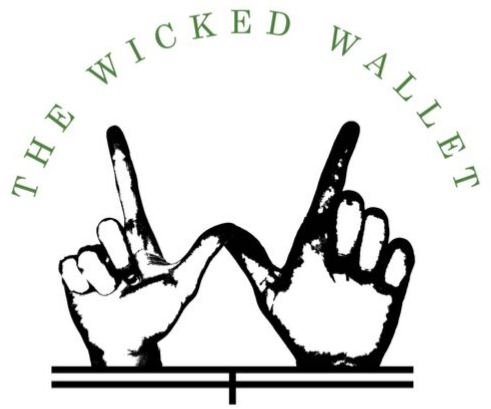There are a number of real estate investment strategies out there and finding the best strategy really depends on your personal preferences. So, in this post I’ll be discussing one of the more renown strategies, the BRRRR method. This strategy is an efficient and effective way to invest in real estate and acquire a number of properties.
The goal of this strategy is to buy a property, rehab the property, rent it out, then pull your money out by refinancing, and finally repeat. I know that may sound confusing so let’s go through each, step-by-step.
Buy
Finding an investment property to purchase is arguably the most important step and can sometimes be difficult. For the BRRRR strategy, you want to find a home that needs some TLC (tender love and care) but would be worth more after your repairs. In order to make a fair estimate of the after repair value you will have to do some market research for that area.
Market Research
Solid market research can be done free of charge through the almighty google. I would recommend researching what other houses have sold for on the street you are looking at to get an idea. A good way to do this is by checking the city/town tax assessor site. Most cities and towns have their own site where you can search exact addresses and see what they have sold for. Simply google “(city/town name) tax assessor” and you should find what you are looking for.
Another option is to network with investors in that area and get their opinions. You can also talk with real estate agents from that area or even talk with a bank lender in that area. Just remember that agents are trying to sell properties so take their opinions with a grain of salt. Lenders should have a really good idea of the market and knowledge of were prices are probably going.
The 70% Rule
This rule is a basic formula that many BRRRR investors use, as well as flippers. 70% is the amount of the purchase price that will be financed through a bank. Typically bank lenders will finance up to 75% so the 70% gives you a more conservative number to work with. The formula is:
(After Repair Value *.70) - repair costs = Max purchasing price
For example, let’s say you are looking at buying a property for $100,000 and have performed your market research and believe that if you put $50,000 in repairs the ARV (after repair value) will be $200,000. So, if we use the 70% rule we find that the most we can pay for this property is $90,000. Using this rule you can set a baseline for how much you can bid on a property. This rule can definitely help prevent someone from over bidding on a property.
Rehab
The next step is the rehab of the property. When deciding where to start with a rehab project you want to think about what fixes or additions would bring the property more value and what improvements would make this home more desired.
Some of the easiest improvements can be as simple as some fresh paint and additional lighting. It really is amazing how much that can make a difference. Other fixes such as plumbing or a new roof may be necessary and tend to be very expensive. When inspecting a property for maintenance needs make sure you know your stuff or you are with someone who knows what they are looking for. These repairs may not break the deal but you definitely want to foresee those expenses and factor it into your numbers.
Miscalculating the cost of repairs is one of the sure ways to get into a bad deal, so it really is important to know your stuff or hire someone who does. The beautiful part of rehabbing a property is that it attracts better tenants who are willing to pay higher rents.
A great tool that you can use when running your numbers are the Bigger Pocket calculators. These will help you analyze and evaluate a deal to make sure that you are not paying to much.
Rent
If you are purchasing a property that is already being rented out you should ask how much the current tenant(s) are paying in rent. Since you conducted market research you can compare what the tenants are currently paying compared to the market. This should give you an idea of what you can expect after you have rehabbed the property.
It’s important to know that location really does matter. If you buy and repair a cheap house in a bad neighborhood you shouldn’t expect to get market rents for that type of property. Individuals who are looking to rent out a nice home want it to be in a favorable neighborhood, perhaps near a school, hospital, or shopping center.
Refinance
The third step in the BRRRR investment strategy is to refinance the property. Let’s say you purchased a property for $90,000, rehabbed it for $50,000 and the property has been appraised for $200,000. You can refinance the value of the property with a bank lender and receive up to 80% of the appraisal value, for this example let’s use 70%. So, 70% of $200,000 is $140,000 which equates to your purchase price + rehab costs. Effectively you have pulled out all of your money from this investment and can now use that towards another property, hence the final step.
*It’s worth noting that there is typically (not always) a seasoning period which requires you to own a home for 6 months or a year before refinancing. This shouldn’t be detrimental but you want to be aware so you can plan accordingly.
Even though in this example you did not make any profit from the refi you still have 30% equity in a fixed up property that ideally is cash flowing from the rent you are collecting, and you were able to pull out your initial investment to be used for the next property. As you can see the BRRRR strategy can be a very effective way to grow your wealth and scale your rental property portfolio.
Not to mention that the velocity of your money is increasing tremendously. You can use the same money you spent on this deal to buy another and another and another, essentially using the same exact money over and over again while making a profit on it. It’s truly a no-brainer.
Repeat
Alright time to take a breath, after going through the BRRRR gauntlet you have now reached the final step. Which is repeat steps 1-4.
Use the BRRRR method to grow your portfolio as large as you’d like. If you follow these steps correctly you will be able to create a strong portfolio of rental properties. This will be a great source of passive income that may even allow you to retire early.
Closing Thoughts
Full disclosure: Gina and I have yet to use this strategy but have done a lot of research on it. We are planning on starting the BRRRR investment strategy in the near future. The fact that the velocity of your money is rapidly increasing is just another benefit of this strategy. Overall this strategy allows you to grow your portfolio at a quick rate and does not require millions of dollars.
If you want to learn more about this strategy you can check out biggerpockets. Be sure to look through the forum section and listen to there podcast. They have a plethora of real estate knowledge and is our go to for all things real estate. The cohost of the the Bigger Pockets podcast, David Green, just released his new book explaining the BRRRR strategy which explains the method in a detailed but simple fashion. If you are more of a visual person this video may help you develop a stronger understanding of BRRRR.
Interested in other real estate strategies? Check out these posts!



